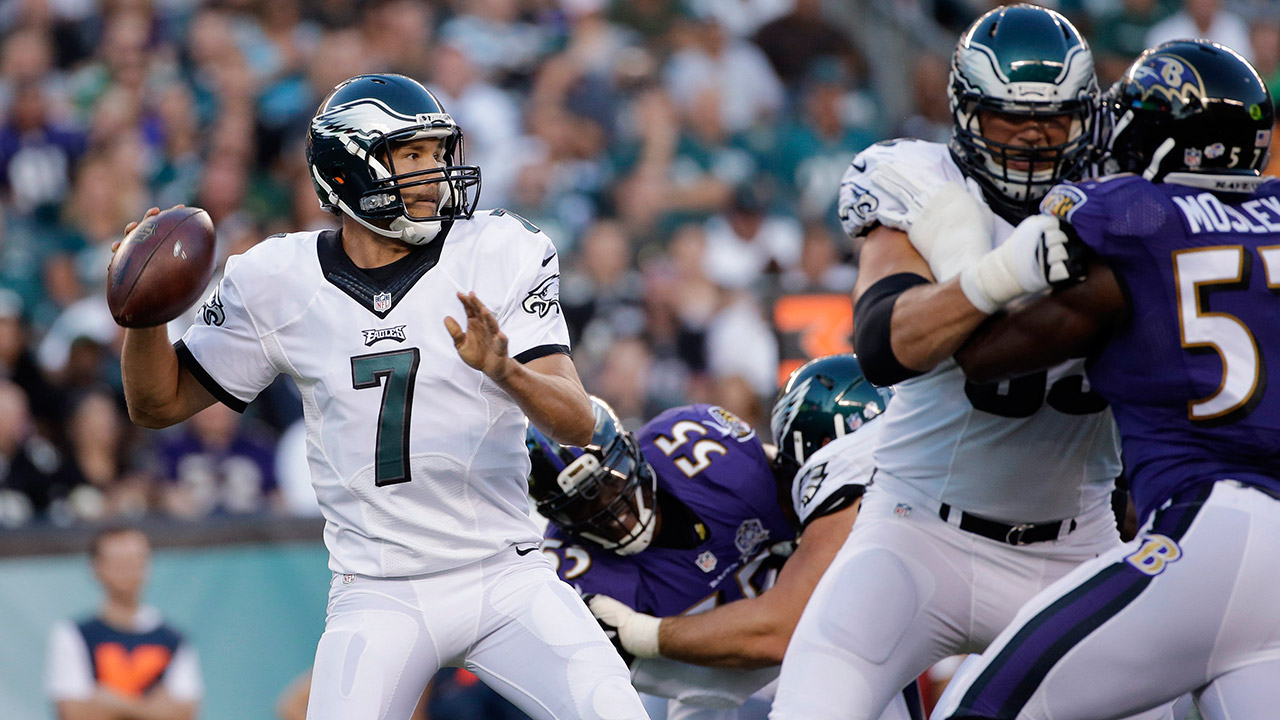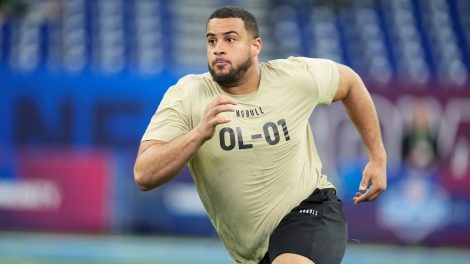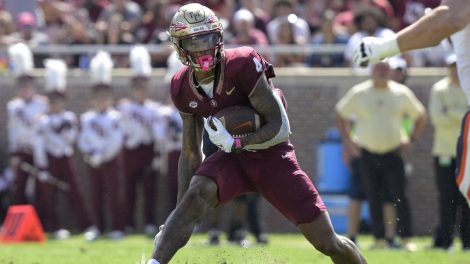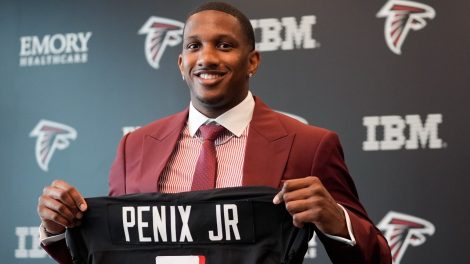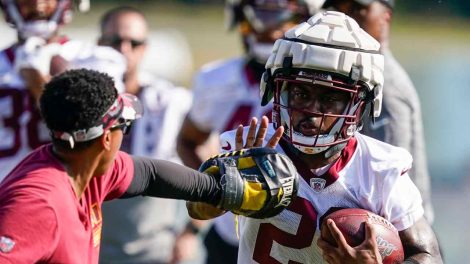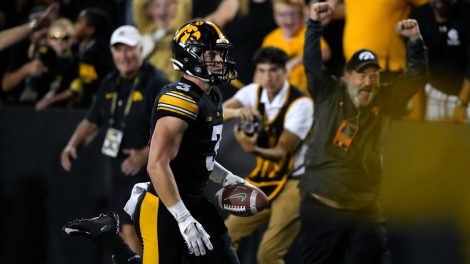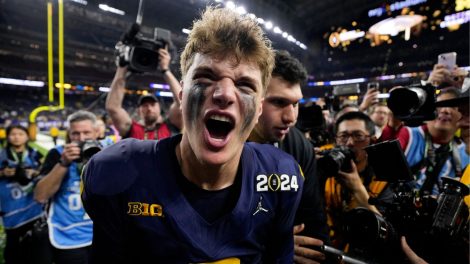If the read-option is dying a slow death, then Terrell Suggs’s hit on Sam Bradford just brought it one step closer to the grave.
On the Eagles’ sixth snap of their pre-season tilt with the Ravens, Bradford handed the ball off to Darren Sproles and Suggs took that opportunity to hit the quarterback in his knees as he carried out the play fake.
The NFL’s vice-president of officiating, Dean Blandino, has ruled the hit was not a foul and should not have been penalized.
“If the quarterback has an option, he’s considered a runner until he either clearly doesn’t have the football or he re-establishes himself as a passer,” Blandino stated on the NFL Network. “So it’s not a foul by rule. It’s something that we’ll make sure that we cover with our game officials because the defensive end coming off the edge, he doesn’t know if the quarterback is going to keep it, he doesn’t know if he’s going to take off and run or drop back and so we treat the quarterback in that instance as a runner.”
The Eagles offensive mastermind doesn’t agree. “It was just a handoff,” Philadelphia head coach, Chip Kelly, said. “We don’t run as much zone-read as everyone thinks we do. I thought the interpretation on the field was correct.”
Kelly went on to say, “I know our quarterbacks can get hit on a read-option play, but not every run we have is a read-option run. We run sweep, power, counter, trap–all of those things out of the gun. Everyone in the league runs shotgun runs. Are they going to hit every quarterback in the league when they hand off in the shotgun?”
The simple answer is: yes. Kelly’s assertion is that it wasn’t a true read-option play because it was predetermined they were handing the ball off in the huddle. But he is missing the point that it looked like an option play by design, primarily to deceive Suggs.
The read-option requires a read by both the quarterback and the defender being read. The very fact that Suggs was unblocked on the play indicates he was accounted for in the blocking scheme because it was assumed he would go to the QB. That is the hidden key to the zone-read and why it has been wildly successful at all levels—it is mathematically in favour of the offence. If you can leave a defender unblocked by using your QB as a decoy, it gives you a numerical advantage in blocking everyone else on the line of scrimmage.
Suggs had the right to tackle Bradford below the knees and treat him like a running back because it was not outside the realm of possibility that the QB might pull the ball and run. Hits like the one Terrell Suggs put on Sam Bradford are going to be legal in the future, so play-callers had better take note.
“When you run the read-option, you have to know the rules,” Suggs said after the game. “If you want to run the read-option with your starting quarterback that has had two knee surgeries, that’s on you. That’s not my responsibility to update you on the rules. I could have hit him harder than that. I eased up.”
Other defenders are in line with Suggs on the issues. “I’m taught to make the play, I try to make the play,” said Denver outside linebacker Von Miller, who had 14 sacks last year. “You’ve got to have quick eyes to be able to see who has the ball and who doesn’t. Sometimes you can’t.”
Coordinators’ defence-to-zone-read conundrum has become this: If you cancel out our defensive end in your blocking scheme with your quarterback, we’ll have our defensive end cancel out your quarterback. The read-option is predicated on a defender not knowing who will carry the ball and having to make an adjustment on the fly. Edge defenders are now being taught to continue to play fast and go after the quarterback and let the rest of the scheme take care of the running back.
The concept of making the QB pay on the play isn’t new. The Ravens did the same thing in the 2013 Super Bowl to Colin Kaepernick and thus was born the blueprint on how to defend the read-option.
Based on the league’s stance, defenders know they have a free shot on zone-read plays, which is the exact opposite of the league’s stance when a QB is in the pocket passing (see under: “Brady Addendum” created in 2008 after Tom Brady tore his ACL in week one against the Chiefs).
Chip Kelly has run 515 read options since coming in to the NFL. That’s almost twice as many as the next team—the Russell Wilson–led Seahawks, who have called 280. Bradford has two surgically repaired knees so this will be a season-long issue for the Eagles if Kelly keeps calling such a high number of zone reads. Based on the NFL’s stance, every play-caller has to weigh the cost-benefit analysis of the zone read. Chip Kelly and Sam Bradford—consider yourselves warned.

